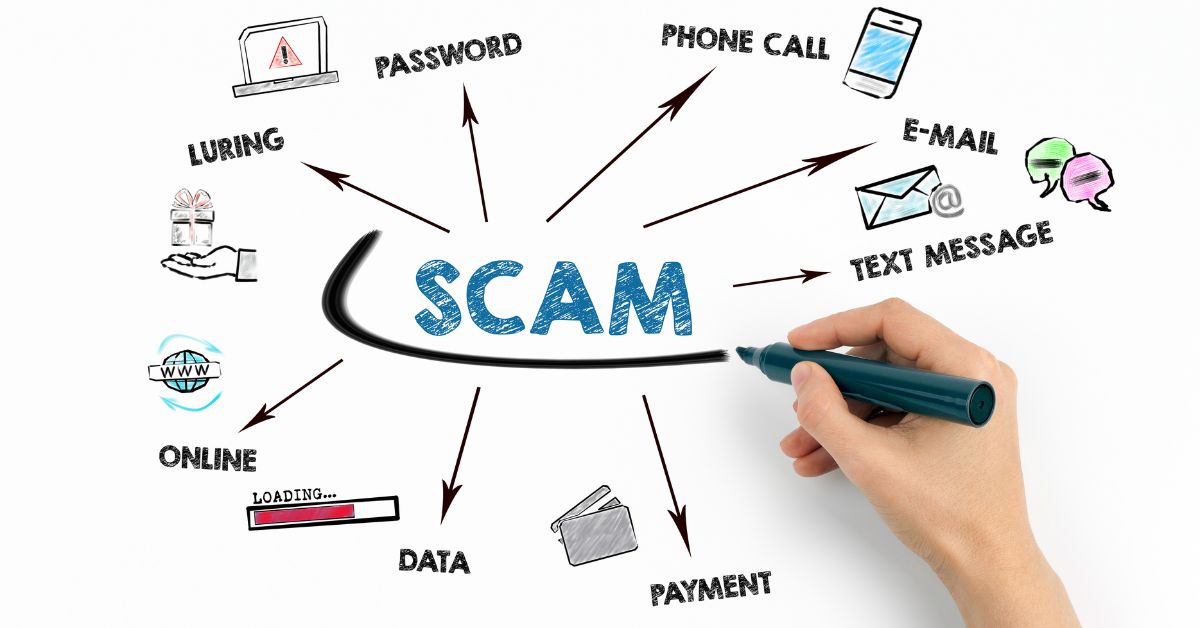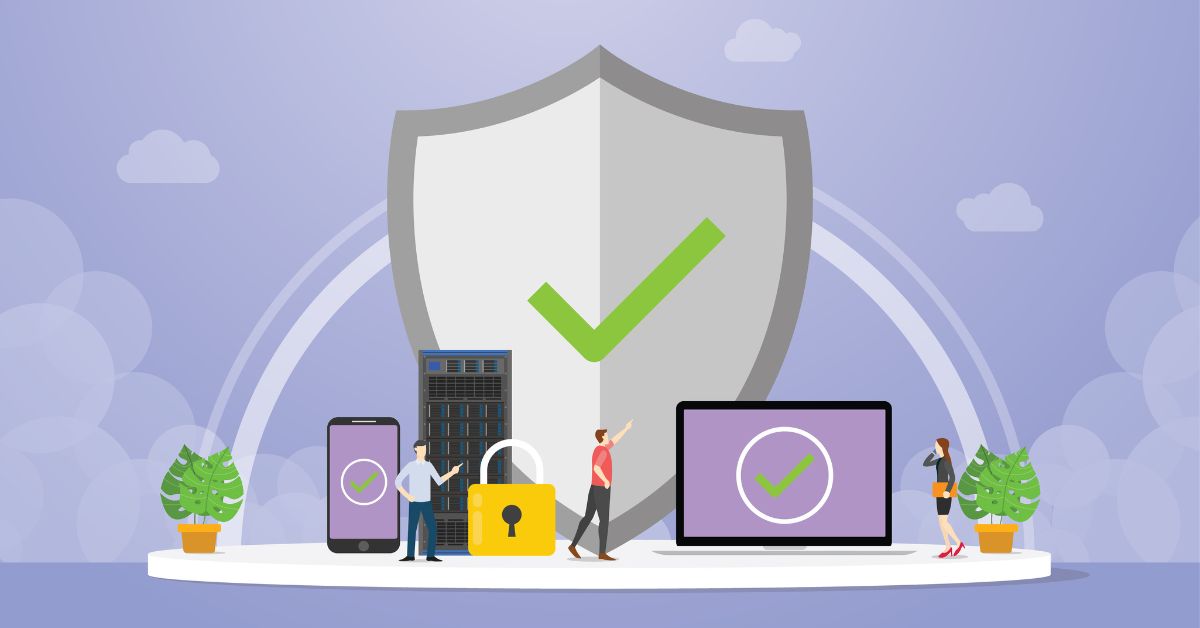
How Can You Protect Yourself from Internet Hoaxes
We’ve all see the internet scams that are easy to spot, such as an email from our long-lost relative promising money. All they require is your bank account information, and you’ll see a deposit in two business days!
>Most of us can easily shrug off these somewhat humorous attempts, but not all hoaxes are that easy to spot. Sometimes, we end up falling victim without even realizing we’ve done it. Cyber threats are becoming more sophisticated and piggybacking off of automatic updates, public Wi-Fi networks, and other typical things that are often overlooked. Additionally, they can catch you off guard by coming through trusted sources such as an e-mail from a friend, an update from a celebrity, chain letters, or a site you’ve been to many times.
What is an Internet Hoax?
Internet hoaxes can take a few forms. They’re often meant to spread false information that draws people in. Once the reader clicks on a seemingly innocent link, a virus spreads, stealing sensitive information, clogging your operating system, stalling networks, and slowing down internet and email services.
What is a Common Indicator in Phishing Scams?
The biggest, most blaring indicator of a phishing attempt is an unexpected email or text message with a fake URL, especially if it looks like it’s from a trusted source but is slightly off. The link will often contain malware, spyware, or other computer virus hoaxes. It’s important to be very careful when clicking on attachments in suspicious communications.
Phishing scams are intended to steal personal details such as credit card information. Never give out sensitive information without being absolutely confident of the request’s source. Staying informed about how your companies communicate will help protect you from these fraudulent emails and texts.

Common Types of Internet Hoaxes
When you stay informed about the common ways that internet hoaxes are spread, it’s like another layer of added protection. You can more easily spot suspicious activity when you take simple steps like staying “in the know” and using common sense in misleading situations.
1. Fake news articles
Some websites and articles are designed specifically to trick you into believing false information. Sometimes it’s a part of a political agenda, other times it’s clickbait. This is commonly referred to as “fake news.” Though, it’s not technically illegal to create this kind of content, it is unethical and frustrating to have to sort through.
A website being registered as a nonprofit or a political site doesn’t make it automatically safe. You can search on Google for “fake news sites” and whole lists will come up. All of these sites should be avoided.
2. Viral social media misinformation
Anything has the potential to go viral on social media. There’s not a lot of fact-checking that goes on, and there’s very little restriction about what can be posted. On top of that, people are eager to believe. They want to trust in others, and they want to believe the extremes. It can make some misinformation spread like wildfire. It’s important to do your own research on matters such as these.
3. Email scams and phishing
Email is the most common form of scamming. Hackers will use deception and mimicry to convince you to share your private information.
Phishing, specifically, involves sending targeted emails with links that look like they come from legitimate businesses or other sources. Clicking on whatever link is included usually installs malware on your computer that is tricky or impossible to get rid of. There’s usually something slightly off about these emails, so pay close attention any time you’re considering clicking on a link. Misspelled words, improper capitalization, and unfamiliar logos all indicate something else is going on.
Motivations Behind Creating an Internet Hoax
Spreading fake news may seem pointless, but there are several reasons behind it. One could be that someone is seeking online fame. A catchy, fake story can go viral overnight and the person who shared it might gather millions of followers, likes, and shares from a single video. This is sometimes sought after as a way to boost self-esteem. It doesn’t often create a lasting or loyal following since it almost comes out that the news was fake.
Fake news can also be used to gain money. In fact, some people make a living off of it. Google advertisements pay based on the number of clicks that a website gets. Creating articles full of false, engaging content means people will click on it. Even if the reader soon finds out that it’s fake news, they still clicked, which means the creator gets paid. This is called Clickbait.
What is Online Fraud?
Online fraud is financial fraud and/or identity theft that is committed via the Internet.
Financial fraud is when someone sells fictional goods. They accept payment and personal information, but then they never deliver.
Identity theft is fairly straightforward. It’s when personal information is stolen until another, identical identity can be created. This is useful for a number of illicit reasons and people.

How to Protect Yourself Against Identity Theft
Keep Yourself Safe Online
There are a few things you can do to shore up your online defenses.
Firstly, avoid sharing personal information on social media. Keep any PII (Personally Identifiable Information) to yourself. This includes your Social Security number, bank account information, email address, passport number, driver’s license number, your full name, and anything else that ties directly to you.
Don’t access your personal accounts over unsecured wireless networks. This is one of the fastest ways to lose your information. All public Wi-Fi networks are risky, but ones without passwords are absolutely a risk. Anything you access could be monitored on public Wi-Fi, so be careful.
Use strong and unique passwords. In the cyber world, a strong password can go a long way to protect your accounts. Avoid using the same password across multiple accounts, keep your written passwords out of sight, and avoid common passwords such as your name. If you can manage it, two-factor authentication is a great way to protect your information because it requires twice as much.
Don’t Give Out Personal Information to Unverified Sources
If a phone call or email is asking for personal information, it doesn’t matter how convincing it looks, you should confirm with your company. Find and call a legitimate phone number that isn’t included in the message you received. If they did send out a request, they’ll be able to tell you.
Regularly Review Bills and Account Statements for Unusual Activity
There’s this idea among hackers that small charges won’t be noticed. You can thwart these people simply by keeping close track of your accounts. If you usually get your report in the mail but it doesn’t come, call your company and make sure the mail hasn’t been redirected to another house.
Check Your Credit Report Regularly
You should check your credit at least once a year and make sure that the information displayed is accurate. If you do find strange activity, there are ways you can report it. If the activity does turn out to be fraudulent, you can get it removed from your credit score.
Signs of an Internet Hoax
Signs that what you’re reading is a hoax include:
- Requests to forward the message to as many people as possible. This is so that the false information can be spread far and wide.
- Threats of consequences if you ignore the request. Legitimate companies don’t threaten their customers.
- No/fake source of information. People will often generate their own content to act as sources for their hoaxes.
- No details cited on the author/origin of the information. One of the easiest ways to avoid responsibility for the information you’re sharing is to not exist.
- Clear points in time are never mentioned. The more general information is, the less likely it is to conflict with someone’s prior knowledge.
How to Protect Yourself Against an Internet Hoax
1. Check the Source
Just because it’s online, doesn’t make it true. Be wary of everything you read and check it against your own trusted resources.
2. Fake Videos
Fake videos are nothing new. Since the dawn of YouTube, they’ve been mixing the pot.
Perhaps the easiest way to spot a fake video is to look at the URL. If it has something like “.gif,” “.mp4” or “.wmv,” at the end, it’s probably fake.
3. Fake News Sites
A lot of fake news sites are just meant to spread fear among the populace. If you search up “hoax websites” or “fake news websites” on Google, you’ll find lists of discredited websites that you should avoid.
4. Bitcoin Scams
With cryptocurrencies like Bitcoin rising in popularity, the number of scams involving them has also gone up. Many new sites have been created for the express purpose of fooling people into thinking they’re making a legitimate investment.
Before putting any money down, check out trusted reviews of sites and make sure what you’re looking at isn’t going to end up costing more than you’re looking to spend.
5. Bogus Warnings
Bogus hoaxes are meant to scare people into taking action. There are ones that say milk will give you cancer, and there are others that say eggs will give you a heart attack. The point is to sew fear.
Common sense will protect you from many of these, but if you see something concerning, instead of just swallowing the information whole, look into it further by seeking out real medical sites and studies.
Conclusion
There are plenty of scams out there, but with some strong passwords and good research skills, you can protect yourself from a lot of problems.
Stay aware of what’s going on and the methods by which people spread misinformation, be wary of unusual communications, and always find a way to verify your sources as well as the source of any personal information requests.
Remember, just because it’s from the internet, doesn’t make it true. Stay safe out there.

Written By Brittany Derderian, Director of Marketing
Brittany Derderian is the Director of Marketing at Broadlinc internet services. Her responsibilities include leading the company’s marketing efforts, overseeing and growing the marketing department, consistently identifying revenue opportunities within our established client base and managing consistent growth by securing new accounts, collaborating with the leadership team to uncover insights and strategies to develop and implement marketing and branding strategies for new and existing products, and spearheading the strategic and tactical execution of marketing campaigns, including design of test/control segmentation, implementation of tests, tracking, results reporting, analysis, and recommendations. You can find her on the weekends enjoying the outdoors of Colorado with her husband, Logan Derderian.